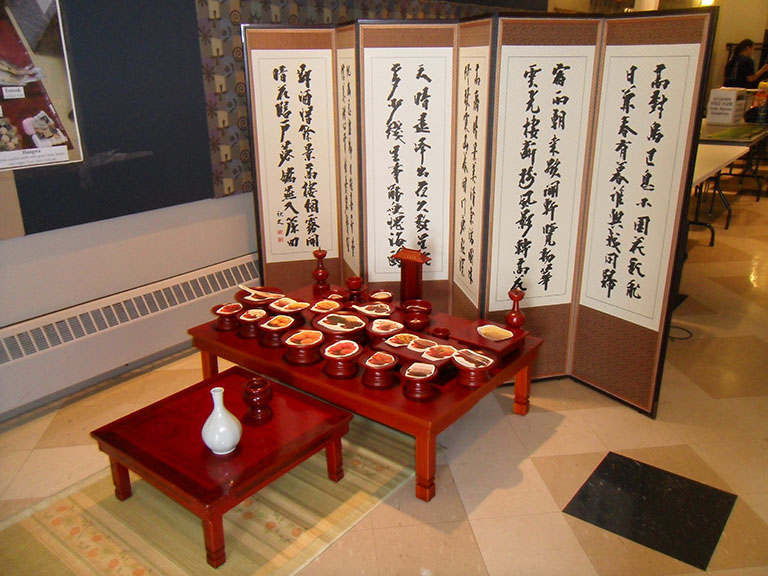IU Korean Night: cultural connections
April 6, 2017
Indiana University’s 2017 Korean Night at the Wilkie Auditorium started at 2:00 P.M. and ended at 7:30 P.M. The annual event started off with cultural activities.
When I entered through the front entrance of the Wilkie Center, the first booth in my line of sight was KukSunDo. KukSunDo is a traditional Korean art form that uses stretching, breathing, and meditation for improving one’s self-awareness. Two of the KukSunDo people were in their blue and red uniforms as they spoke to everyone who stopped by.
The East Asian Studies Center was the next table with their raffles and prizes. The National Consortium for Teaching about Asia (NCTA) had several flyers on the many uses of the East Asian Studies Center and upcoming events related to promoting East Asia. Beside the NCTA was Indy Korea, a monthly magazine written about Indiana in Korean and English.
At the event, there both a picture of a jesasang, an ancestor worship table, and an actual display of jesasang without the actual food. Some of the items that would be seen on a jesasang are rice, jibang, or spirit tablet, and apples.
In addition, people could dress up in hanbok, the traditional Korean clothing. This part of the cultural activities was very popular. There would always be people waiting in line to try on a hanbok.
The Center for P-16 Research and Collaboration was able to be a part of Korean Night, and people who stopped by could play a round of omok, which translates to “five pieces.” Omok is like Connect-4, except it’s Connect-5. Also, there are less boundaries, and both players place their game pieces on a horizontal plane. Although I lost, I enjoyed playing my round of omok. The Center for P-16 Research and Collaboration aims to develop global citizenship for Indiana students and teachers using the P-16 curricula.
The IU Tae Kwon Do Club had their booth at this event and offered flyers on IUTKD. They practice Ji Do Kwan Tae Kwon Do but welcome anyone and everyone, no matter the age and experience level.
There were tables for Hanji, or Korean paper, bookmarks and jongi jeopgi, or paper folding. At the Hanji bookmarks booth, people would create bookmarks from pre-cut cardboard and Korean paper. At the jongi jeopgi booth, there was the option of creating a paper hanbok or a fan.
The IU Korean Conversation Club had their booth and an area for tuho, a game that requires the player to throw arrows into a bottle. The IU Korean Conversation Club is for students interested in Korean culture, who want to learn the Korean language.
There was a booth for traditional Korean instruments. Some of the instruments on the table were the drum, janggu, and kkwaenggwari. These instruments were accompanied by descriptions on what these instruments were made out of, the sounds they created, and their role in music.
 Joan Lee
Joan Lee
The Korean School of Bloomington’s booth featured posters on their Korean school and hangul, the Korean alphabet. In addition, They had candy and some of their textbooks beside the posters.
The Korean Students Association had posters on North and South Korea, pungmul, and jegichagi. Pungmul is a Korean folk music tradition, or “farmers’ music,” and includes drumming, dancing, and singing. Jegichagi is a traditional Korean outdoor game that uses one’s foot to kick a shuttlecock-shaped object called jegi.
The IU Institute for Korean Studies; Office of the Vice President for Diversity, Equity, and Multicultural Affairs; IU Korean Students Association; IU Korean Conversation Club; the Sejong Multicultural Society; and Starbucks sponsored this year’s Korean Night.
All in all, I enjoyed Korean Night. It was interesting to find out what more I could learn about Korea and the organizations that are working to spread Korean culture. The games activities that were made available by some of the booths were new or familiar but invigorating. In addition, I loved the performances at Korean Night, but that’s another article.


